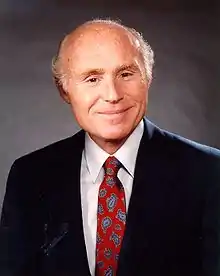2000 United States Senate elections
The 2000 United States Senate elections were held on November 7, 2000. The elections coincided with other federal and state elections, including the presidential election which was won by Republican George W. Bush. It featured a number of fiercely contested elections that resulted in a victory for the Democratic Party, which gained a net total of four seats from the Republican Party. This election marked the first election year since 1990 where Democrats made net gains in the Senate.
| ||||||||||||||||||||||||||||||||||||||||
34 of the 100 seats in the United States Senate 51[lower-alpha 1] seats needed for a majority | ||||||||||||||||||||||||||||||||||||||||
|---|---|---|---|---|---|---|---|---|---|---|---|---|---|---|---|---|---|---|---|---|---|---|---|---|---|---|---|---|---|---|---|---|---|---|---|---|---|---|---|---|
| ||||||||||||||||||||||||||||||||||||||||
 Results of the elections: Democratic gain Democratic hold Republican gain Republican hold No election | ||||||||||||||||||||||||||||||||||||||||
| ||||||||||||||||||||||||||||||||||||||||
These elections took place six years after Republicans had won a net gain of eight seats in Senate Class 1. Despite George W Bush's victory in the presidential election, the GOP lost 4 senate seats, the most a winning president's party has lost since the passage of the 17th amendment. Democrats defeated incumbent Republicans in Delaware, Michigan, Minnesota, Missouri, and Washington, and they won an open seat in Florida. In Missouri, the winner was elected posthumously. The Republicans defeated a Democratic incumbent in Virginia, and won an open seat in Nevada.
These elections resulted in an equal 50–50 split between Republicans and Democrats, so the Vice President would cast the tie-breaking votes in organizing the Senate.[lower-alpha 1] Democrats thereby held Senate control briefly for only 17 days, since Al Gore was still Vice President and President of the Senate at the beginning of the new term on January 3, 2001. The Republicans regained control of the chamber when the new Vice President Dick Cheney was inaugurated January 20. The Republican majority would last until June 6, 2001, when Republican Senator Jim Jeffords of Vermont became an independent and caucused with the Democrats.
Until 2021, this was the last time that Democrats would win a Senate seat in Georgia, and the result would be a 50–50 split with control decided by the Vice President's tie-breaking vote. This was also the last election with only Republicans and Democrats in the Senate and the last elections in which Republicans won seats in Rhode Island and Vermont. This is also the last time the senate changed hands in a presidential election year.
Results summary
| 50 | 50 |
| Democratic | Republican |
| Parties | Breakdown | Total seats | Popular vote | Total candidates | ||||||
|---|---|---|---|---|---|---|---|---|---|---|
| Up | Elected | Not up | 2000 | +/- | Vote | % | General[lower-alpha 5] | |||
| Democratic Party | 15 | 19 | 31 | 50 | 36,780,875[lower-alpha 3] | 47.039% | 33 | |||
| Republican Party | 19 | 15 | 35 | 50 | 36,725,431[lower-alpha 3] | 46.968% | 34 | |||
| Libertarian Party | - | - | - | - | - | 1,036,684 | 1.326% | 22 | ||
| Green Party | - | - | - | - | - | 652,329 | 0.834% | 8 | ||
| Independent | - | - | - | - | - | 365,614 | 0.468% | 24 | ||
| Constitution Party | - | - | - | - | - | 286,816 | 0.367% | 8 | ||
| Reform Party | - | - | - | - | - | 190,509 | 0.244% | 8 | ||
| Independence Party | - | - | - | - | - | 183,764 | 0.235% | 2 | ||
| Socialist Workers Party | - | - | - | - | - | 15,996 | 0.020% | 2 | ||
| Other parties | - | - | - | - | - | 1,461,975 | 1.870% | 12 | ||
| Write-in | - | - | - | - | - | 324,295 | 0.415% | - | ||
| Total | 34 | 34 | 66 | 100 | - | 78,191,797 | 100.0% | 153 | ||
Source: Clerk of the House of Representatives (June 21, 2001). "Statistics of the Presidential and Congressional Election of November 7, 2000" – via House.gov.
Change in composition
Before the elections
| D1 | D2 | D3 | D4 | D5 | D6 | D7 | D8 | D9 | D10 |
| D20 | D19 | D18 | D17 | D16 | D15 | D14 | D13 | D12 | D11 |
| D21 | D22 | D23 | D24 | D25 | D26 | D27 | D28 | D29 | D30 |
| D40 N.J. Retired |
D39 Nev. Retired |
D38 Neb. Retired |
D37 Mass. Ran |
D36 Md. Ran |
D35 Hawaii Ran |
D34 Ga. (sp) Ran |
D33 Conn. Ran |
D32 Calif. Ran |
D31 |
| D41 N.M. Ran |
D42 N.Y. Retired |
D43 N.D. Ran |
D44 Va. Ran |
D45 W.Va. Ran |
D46 Wis. Ran |
R54 Wyo. Ran |
R53 Wash. Ran |
R52 Vt. Ran |
R51 Utah Ran |
| Majority → | |||||||||
| R41 Mich. Ran |
R42 Minn. Ran |
R43 Miss. Ran |
R44 Mo. Ran |
R45 Mont. Ran |
R46 Ohio Ran |
R47 Pa. Ran |
R48 R.I. Ran |
R49 Tenn. Ran |
R50 Texas Ran |
| R40 Maine Ran |
R39 Ind. Ran |
R38 Fla. Retired |
R37 Del. Ran |
R36 Ariz. Ran |
R35 | R34 | R33 | R32 | R31 |
| R21 | R22 | R23 | R24 | R25 | R26 | R27 | R28 | R29 | R30 |
| R20 | R19 | R18 | R17 | R16 | R15 | R14 | R13 | R12 | R11 |
| R1 | R2 | R3 | R4 | R5 | R6 | R7 | R8 | R9 | R10 |
After the elections
| D1 | D2 | D3 | D4 | D5 | D6 | D7 | D8 | D9 | D10 |
| D20 | D19 | D18 | D17 | D16 | D15 | D14 | D13 | D12 | D11 |
| D21 | D22 | D23 | D24 | D25 | D26 | D27 | D28 | D29 | D30 |
| D40 N.M. Re-elected |
D39 N.J. Hold |
D38 Neb. Hold |
D37 Mass. Re-elected |
D36 Md. Re-elected |
D35 Hawaii Re-elected |
D34 Ga. (sp) Elected[lower-alpha 6] |
D33 Conn. Re-elected |
D32 Calif. Re-elected |
D31 |
| D41 N.Y. Hold |
D42 N.D. Re-elected |
D43 W.Va. Re-elected |
D44 Wis. Re-elected |
D45 Del. Gain |
D46 Fla. Gain |
D47 Mich. Gain |
D48 Minn. Gain |
D49 Mo. Gain[lower-alpha 7] |
D50 Wash. Gain |
| Majority (with Democratic vice president)[lower-alpha 4]→ | |||||||||
| R41 Ohio Re-elected |
R42 Pa. Re-elected |
R43 R.I. Re-elected |
R44 Tenn. Re-elected |
R45 Texas Re-elected |
R46 Utah Re-elected |
R47 Vt. Re-elected |
R48 Wyo. Re-elected |
R49 Nev. Gain |
R50 Va. Gain |
| R40 Mont. Re-elected |
R39 Miss. Re-elected |
R38 Maine Re-elected |
R37 Ind. Re-elected |
R36 Ariz. Re-elected |
R35 | R34 | R33 | R32 | R31 |
| R21 | R22 | R23 | R24 | R25 | R26 | R27 | R28 | R29 | R30 |
| R20 | R19 | R18 | R17 | R16 | R15 | R14 | R13 | R12 | R11 |
| R1 | R2 | R3 | R4 | R5 | R6 | R7 | R8 | R9 | R10 |
| Key: |
|
|---|
Race summary
Special elections during the previous Congress
In this special election, the winner was seated between January 1, 2000, and January 2, 2001.
| State (linked to summaries below) |
Incumbent | Results | Candidates | ||
|---|---|---|---|---|---|
| Senator | Party | Electoral history | |||
| Georgia (Class 3) |
Zell Miller | Democratic | 2000 (Appointed) | Interim appointee elected November 7, 2000. |
|
Elections to the next Congress
In these general elections, the winners were elected for the term beginning January 3, 2001.
All of the elections involved the Class 1 seats.
| State (linked to summaries below) |
Incumbent | Results | Candidates | ||
|---|---|---|---|---|---|
| Senator | Party | Electoral history | |||
| Arizona | Jon Kyl | Republican | 1994 | Incumbent re-elected. |
|
| California | Dianne Feinstein | Democratic | 1992 (Special) 1994 |
Incumbent re-elected. |
|
| Connecticut | Joe Lieberman | Democratic | 1988 1994 |
Incumbent re-elected. |
|
| Delaware | William Roth | Republican | 1970 1971 (Appointed) 1976 1982 1988 1994 |
Incumbent lost re-election. New senator elected. Democratic gain. |
|
| Florida | Connie Mack III | Republican | 1988 1994 |
Incumbent retired. New senator elected. Democratic gain. |
|
| Hawaii | Daniel Akaka | Democratic | 1990 (Appointed) 1990 (Special) 1994 |
Incumbent re-elected. |
|
| Indiana | Richard Lugar | Republican | 1976 1982 1988 1994 |
Incumbent re-elected. |
|
| Maine | Olympia Snowe | Republican | 1994 | Incumbent re-elected. |
|
| Maryland | Paul Sarbanes | Democratic | 1976 1982 1988 1994 |
Incumbent re-elected. |
|
| Massachusetts | Ted Kennedy | Democratic | 1962 (Special) 1964 1970 1976 1982 1988 1994 |
Incumbent re-elected. |
|
| Michigan | Spencer Abraham | Republican | 1994 | Incumbent lost re-election. New senator elected. Democratic gain. |
|
| Minnesota | Rod Grams | Republican | 1994 | Incumbent lost re-election. New senator elected. Democratic gain. |
|
| Mississippi | Trent Lott | Republican | 1988 1994 |
Incumbent re-elected. |
|
| Missouri | John Ashcroft | Republican | 1994 | Incumbent lost re-election. New senator elected posthumously. Democratic gain. |
|
| Montana | Conrad Burns | Republican | 1988 1994 |
Incumbent re-elected. |
|
| Nebraska | Bob Kerrey | Democratic | 1988 1994 |
Incumbent retired. New senator elected. Democratic hold. |
|
| Nevada | Richard Bryan | Democratic | 1988 1994 |
Incumbent retired. New senator elected. Republican gain. |
|
| New Jersey | Frank Lautenberg | Democratic | 1982 1982 (Appointed) 1988 1994 |
Incumbent retired. New senator elected. Democratic hold. |
|
| New Mexico | Jeff Bingaman | Democratic | 1982 1988 1994 |
Incumbent re-elected. |
|
| New York | Daniel Patrick Moynihan | Democratic | 1976 1982 1988 1994 |
Incumbent retired. New senator elected. Democratic hold. |
|
| North Dakota | Kent Conrad | Democratic | 1986 1992 (Retired) 1992 (Special) 1994 |
Incumbent re-elected. |
|
| Ohio | Mike DeWine | Republican | 1994 | Incumbent re-elected. |
|
| Pennsylvania | Rick Santorum | Republican | 1994 | Incumbent re-elected. |
|
| Rhode Island | Lincoln Chafee | Republican | 1999 (Appointed) | Interim appointee elected. |
|
| Tennessee | Bill Frist | Republican | 1994 | Incumbent re-elected. |
|
| Texas | Kay Bailey Hutchison | Republican | 1993 (Special) 1994 |
Incumbent re-elected. |
|
| Utah | Orrin Hatch | Republican | 1976 1982 1988 1994 |
Incumbent re-elected. |
|
| Vermont | Jim Jeffords | Republican | 1988 1994 |
Incumbent re-elected. |
|
| Virginia | Chuck Robb | Democratic | 1988 1994 |
Incumbent lost re-election. New senator elected. Republican gain. |
|
| Washington | Slade Gorton | Republican | 1980 1986 (Lost) 1988 1994 |
Incumbent lost re-election. New senator elected. Democratic gain. |
|
| West Virginia | Robert Byrd | Democratic | 1958 1964 1970 1976 1982 1988 1994 |
Incumbent re-elected. |
|
| Wisconsin | Herb Kohl | Democratic | 1988 1994 |
Incumbent re-elected. |
|
| Wyoming | Craig L. Thomas | Republican | 1994 | Incumbent re-elected. |
|
Closest races
In ten races the margin of victory was under 10%
| District | Winner | Margin |
|---|---|---|
| Washington | Democratic (flip) | 0.09%[1][lower-alpha 8] |
| Michigan | Democratic (flip) | 1.6% |
| Missouri | Democratic (flip) | 2.1% |
| Nebraska | Democratic | 2.3% |
| New Jersey | Democratic | 3.0% |
| Montana | Republican | 3.4% |
| Virginia | Republican (flip) | 4.6% |
| Florida | Democratic (flip) | 4.8% |
| Minnesota | Democratic (flip) | 5.5% |
| Pennsylvania | Republican | 6.9% |
Arizona
| |||||||||||||||||||||||||||||||||||||
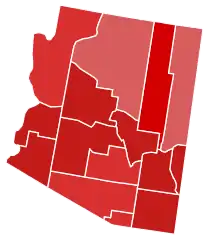 U.S. Senate election results map. Red denotes counties won by Kyl. | |||||||||||||||||||||||||||||||||||||
| |||||||||||||||||||||||||||||||||||||
Incumbent Republican Jon Kyl won re-election to a second term, as no candidate was nominated from the Democratic Party.[2] Independent Bill Toel,[3] Green party nominee Vance Hansen, and Libertarian party nominee Barry Hess each got more than 5% of the vote, a strong third party performance.
| Party | Candidate | Votes | % | ±% | |
|---|---|---|---|---|---|
| Republican | Jon Kyl (Incumbent) | 1,108,196 | 79.32 | +25.62% | |
| Independent | William Toel | 109,230 | 7.82 | ||
| Green | Vance Hansen | 108,926 | 7.80 | ||
| Libertarian | Barry Hess | 70,724 | 5.06 | -1.68% | |
| Majority | 998,966 | 71.50 | +57.34% | ||
| Turnout | 1,397,076 | ||||
| Republican hold | Swing | ||||
California
| |||||||||||||||||
 County results | |||||||||||||||||
| |||||||||||||||||
The heavily financed and popular senator Dianne Feinstein (D) easily won re-election to her second full term defeating the underfunded and underdog candidate Representative Tom Campbell (R) by over 19 points. Campbell even lost his own congressional district by almost 15 points.
| Candidate | Votes | % | |
|---|---|---|---|
| Dianne Feinstein | 3,759,560 | 95.50 | |
| Michael Schmier | 181,104 | 4.50 | |
| Total votes | 3,940,664 | 100.00 | |
| Candidate | Votes | % | |
|---|---|---|---|
| Tom Campbell | 1,697,208 | 56.17 | |
| Ray Haynes | 679,034 | 22.47 | |
| Bill Horn | 453,630 | 15.01 | |
| John M. Brown | 68,415 | 2.26 | |
| Linh Dao | 64,559 | 2.14 | |
| James Peter Gough | 58,853 | 1.95 | |
| Total votes | 3,021,699 | 100.00 | |
| Candidate | Votes | % | |
|---|---|---|---|
| Medea Benjamin | 99,716 | 73.95 | |
| Jan B. Tucker | 35,124 | 26.05 | |
| Total votes | 134,840 | 100.00 | |
| Candidate | Votes | % | |
|---|---|---|---|
| Jose Luis Olivares Camahort | 46,278 | 70.34 | |
| Valli "Sharp" Sharpe | 19,516 | 29.66 | |
| Total votes | 65,794 | 100.00 | |
| Party | Candidate | Votes | % | |
|---|---|---|---|---|
| Libertarian | Gail Lightfoot | 120,622 | 100.00 | |
| American Independent | Diane Beall Templin | 38,836 | 100.00 | |
| Natural Law | Brian M. Rees | 26,382 | 100.00 | |
Despite touting his service as a moderate Republican representing a strongly Democratic district, Campbell was underfunded and a decided underdog against the popular, heavily financed Feinstein. By February, he spent barely $1 million without any PAC money.[4] Campbell has generally supported gay rights and abortion.[5] He also opposes the War on Drugs and calls himself a "maverick", similar to U.S. senator John McCain.[6] Campbell was badly defeated, losing by over 19 points.
| Party | Candidate | Votes | % | |
|---|---|---|---|---|
| Democratic | Dianne Feinstein (Incumbent) | 5,932,522 | 55.84 | |
| Republican | Tom Campbell | 3,886,853 | 36.59 | |
| Green | Medea Susan Benjamin | 326,828 | 3.08 | |
| Libertarian | Gail Lightfoot | 187,718 | 1.77 | |
| American Independent | Diane Beall Templin | 134,598 | 1.27 | |
| Reform | Jose Luis Olivares Camahort | 96,552 | 0.91 | |
| Natural Law | Brian M. Rees | 58,537 | 0.55 | |
| Invalid or blank votes | 519,233 | 4.66 | ||
| Total votes | 11,142,841 | 100.00 | ||
| Turnout | 51.92 | |||
| Democratic hold | ||||
Connecticut
| |||||||||||||||||
 County results | |||||||||||||||||
| |||||||||||||||||
Incumbent Democrat Joe Lieberman won re-election to a third term over Republican Philip Giordano, Mayor of Waterbury and former State Representative. While running for re-election, he was also Al Gore's running mate in the 2000 presidential campaign. With Gore losing the presidency to George W. Bush, Lieberman returned to the Senate and remained there for another 13 years, when he retired. Had the Gore–Lieberman ticket won, Lieberman would have become U.S. Vice President and forced to resign his Senate seat, which would have led to a 2002 special election. It would also have led Republican Governor John G. Rowland to temporarily appoint an interim replacement.[7]
Lieberman, a very popular[8] centrist[9] incumbent, focused on his Vice Presidential campaign. He refused to show up at the debates.[10] Giordano was a heavy underdog, as he was ignored by the press and as he debated alone.[11]
| Party | Candidate | Votes | % | ±% | |
|---|---|---|---|---|---|
| Democratic | Joe Lieberman (Incumbent) | 828,902 | 63.2 | ||
| Republican | Philip Giordano | 448,077 | 34.2 | ||
| Concerned Citizens | William Kozak | 25,509 | 2.0 | ||
| Libertarian | Wildey J. Moore | 8,773 | 0.7 | ||
| Majority | |||||
| Turnout | |||||
| Democratic hold | Swing | ||||
Delaware
| |||||||||||||||||
 County results | |||||||||||||||||
| |||||||||||||||||
Incumbent Republican William Roth ran for re-election to a sixth term, but was defeated by Governor Tom Carper.
For 16 years the same four people had held the four major statewide positions. Because of term limits on the Governor's position Thomas Carper could not run again. Both he and U.S. Representative Michael Castle wanted to be U.S. senator. Roth would not retire, and fellow Republican Castle decided against a primary.
Roth, 79, was in the U.S. Senate for 30 years. He was the Chairman of the Finance Committee. Carper, 53, was a popular Governor and former U.S. Congressman of Delaware's At-large congressional district, who announced his major candidacy against Roth back in September 1999.[13] Both candidates were moderates. Roth was one of the few Republicans to vote for the Brady Bill. Although Roth started the campaign with a 2-to-1 spending advantage, Carper went into the final month with more than $1 million on hand.[14] In a contest between two popular and respected politicians, the issue seemed to be Roth's age versus Carper's relative youth.
Carper defeated Roth by over ten points. However, Roth received more votes than Presidential candidate George W. Bush, suggesting the strength of the Democratic turnout was a boon to Carper's candidacy and a key element of his victory. Many consider Roth's defeat due to his age and health, as he collapsed twice during the campaign, once in the middle of a television interview and once during a campaign event.[15][16][17]
| Party | Candidate | Votes | % | ±% | |
|---|---|---|---|---|---|
| Democratic | Thomas Carper | 181,566 | 55.53 | +13.04% | |
| Republican | William Roth (Incumbent) | 142,891 | 43.70 | -12.12% | |
| Libertarian | J. Burke Morrison | 1,103 | 0.34 | -1.36% | |
| Constitution | Mark E. Dankof | 1,044 | 0.32 | ||
| Natural Law | Robert Mattson | 389 | 0.12 | ||
| Majority | 38,675 | 11.83 | -1.51% | ||
| Turnout | 326,993 | ||||
| Democratic gain from Republican | Swing | ||||
Florida
| |||||||||||||||||
| |||||||||||||||||
Incumbent Republican Connie Mack III decided to retire instead of seeking a third term. Democrat Bill Nelson, State Treasurer and former U.S. Representative, won the open seat over Republican Congressman Bill McCollum.
| Party | Candidate | Votes | % | |
|---|---|---|---|---|
| Republican | Bill McCollum | 660,592 | 81.13 | |
| Republican | Hamilton A. S. Bartlett | 153,613 | 18.87 | |
| Total votes | 814,205 | 100 | ||
| Party | Candidate | Votes | % | |
|---|---|---|---|---|
| Democratic | Bill Nelson | 692,147 | 77.48 | |
| Democratic | Newall Jerome Daughtrey | 105,650 | 11.83 | |
| Democratic | David B. Higginbottom | 95,492 | 10.69 | |
| Total votes | 893,289 | 100 | ||
This election was in conjunction to the presidential election, where Bush narrowly defeated Gore after an intense recount. The senate election was evenly matched with two U.S. Congressmen named Bill in their mid-50s. Both parties heavily targeted this senate seat.[19] The election became very nasty as Nelson called his opponent "an extremist who would sacrifice the elderly, the poor, and the working class to coddle the rich." McCollum called the Democrat "a liberal who would tax everything that moves, and some things that don't." The election advertisements were very negative, as both candidates talked more about each other than themselves.[20]
Nelson raised only soft money,[21] but had help from President Bill Clinton and VP Al Gore.[22] Two days before the election, McCollum predicted he would win by a 6-point margin.[23] On election day, he lost by a 5-point margin.
| Party | Candidate | Votes | % | ±% | |
|---|---|---|---|---|---|
| Democratic | Bill Nelson | 2,989,487 | 51.04 | ||
| Republican | Bill McCollum | 2,705,348 | 46.19 | ||
| Independent | Willie Logan | 80,830 | 1.38 | ||
| Natural Law | Joe Simonetta | 26,087 | 0.45 | ||
| Independent | Darrell L. McCormick | 21,664 | 0.37 | ||
| Reform | Joel Deckard | 17,338 | 0.30 | ||
| Independent | Andy Martin | 15,889 | 0.27 | ||
| Write-in | Nikki Oldaker | 88 | 0.00 | ||
| Majority | 284,139 | 4.85 | |||
| Turnout | 5,856,731 | ||||
| Democratic gain from Republican | Swing | ||||
Georgia (special)
| |||||||||||||||||
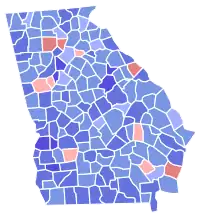 County results | |||||||||||||||||
| |||||||||||||||||
Incumbent Democrat Zell Miller, who was appointed by Governor Roy Barnes to replace the late Paul Coverdell, won re-election to serve the remainder of the term, beating Republican Mack Mattingly, former Ambassador to Seychelles and former U.S. senator. Until 2020, when Raphael Warnock won this seat, and Jon Ossoff won the other Senate seat, this is the last Senate election in Georgia won by a Democrat and also until 2020, this is the last time the Democrats have won the Class III Senate seat from Georgia.
One of the biggest campaign issues was Social Security. Miller attacked Mattingly for supporting a raise in the retirement age.[24] The Republican fought back by connecting him to liberal Democrat Ted Kennedy of Massachusetts, and on his vote to block legislation aimed at protecting Social Security. Mattingly said he would vote for Texas Governor George W. Bush for president, who was very popular in the state and led Vice President Al Gore in many Georgia polls. Mattingly then asked Miller who he was supporting in the presidential election. Miller conceded he would vote for Gore because he helped him when he was governor including drought relief, welfare reform, and the Atlanta Olympics. "That does not mean I agree with all of his policies," he concluded.[25] In early October, a poll showed Miller leading with 59% of the vote, despite the fact that Bush was leading Gore by a double-digit margin.[26]
Note: This election was a non-partisan election due to it being a special election. Each candidate ran without a party. The parties below reflect which party label each candidate would have run under if given the option.
| Party | Candidate | Votes | % | ±% | |
|---|---|---|---|---|---|
| Democratic | Zell Miller | 1,413,224 | 58.19 | ||
| Republican | Mack Mattingly | 920,478 | 37.90 | ||
| Libertarian | Paul Robert MacGregor | 25,942 | 1.07 | ||
| Republican | Ben Ballenger | 22,975 | 0.95 | ||
| Green | Jeff Gates | 21,249 | 0.88 | ||
| Republican | Bobby Wood | 12,499 | 0.51 | ||
| Independent | Winnie Walsh | 11,875 | 0.49 | ||
| Majority | 492,746 | 20.29 | |||
| Turnout | 2,428,242 | ||||
Hawaii
| |||||||||||||||||
 County results | |||||||||||||||||
| |||||||||||||||||
Incumbent Democrat Daniel Akaka won re-election to his second full term, over Republican John Carroll, former State senator and former State Representative.[27]
| Party | Candidate | Votes | % | ±% | |
|---|---|---|---|---|---|
| Democratic | Daniel Akaka (Incumbent) | 251,215 | 72.6 | ||
| Republican | John Carroll | 84,701 | 24.5 | ||
| Natural Law | Lauri A. Clegg | 4,220 | 1.2 | ||
| Libertarian | Lloyd Jeffrey Mallan | 3,127 | 0.9 | ||
| Constitution | David Porter | 2,360 | 0.7 | ||
| Majority | 166,514 | 48.1 | |||
| Turnout | 245,263 | 100.00 | |||
| Democratic hold | Swing | ||||
Indiana
| |||||||||||||||||
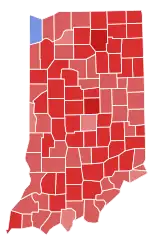 County results | |||||||||||||||||
| |||||||||||||||||
Incumbent Republican Richard Lugar was re-elected to his fifth six-year term over Democrat David Johnson.
Lugar easily won re-election taking 66.5% one of the largest margins in a statewide race in Indiana history. Johnson only took one county, Lake County, which borders Illinois, is a Democratic Stronghold county. Johnson did trounce Lugar in Lake County, but with Lugar doing well elsewhere in the state, it made no real dent in Lugar's lead.
| Party | Candidate | Votes | % | ±% | |
|---|---|---|---|---|---|
| Republican | Richard Lugar (Incumbent) | 1,427,944 | 66.5 | ||
| Democratic | David L. Johnson | 683,273 | 31.9 | ||
| Libertarian | Paul Hager | 33,992 | 1.6 | ||
| Majority | |||||
| Turnout | 2,145,209 | 55 | |||
| Republican hold | Swing | ||||
Maine
| |||||||||||||||||
 County results | |||||||||||||||||
| |||||||||||||||||
Incumbent Republican Olympia Snowe was re-elected to a second term, defeating Democratic candidate Mark Lawrence, former President of the Maine State Senate.
Snowe, a popular moderate incumbent, outpolled and outspent Lawrence.[29] The two candidates agreed to debate on October 15 and 25.[30]
| Party | Candidate | Votes | % | ±% | |
|---|---|---|---|---|---|
| Republican | Olympia Snowe (Incumbent) | 437,689 | 68.94 | +8.70% | |
| Democratic | Mark W. Lawrence | 197,183 | 31.06 | -5.30% | |
| Majority | 240,506 | 37.88 | +14.00% | ||
| Turnout | 634,872 | ||||
| Republican hold | Swing | ||||
Maryland
| |||||||||||||||||
| |||||||||||||||||
Incumbent Democrat Paul Sarbanes won re-election to a fifth term over Republican Paul Rappaport, former Howard County police chief and nominee for Lieutenant Governor in 1994.[31][32]
Rappaport won the Republican primary against S. Rob Sobhani, Ross Zimmerman Pierpont, Robin Ficker, Kenneth R. Timmerman, Kenneth Wayman and John Stafford[33] through a grassroots movement with a plurality of just 23%.[34] Rappaport, a major underdog, pushed for three debates. The four term incumbent actually agreed to one debate on October 26.[35]
| Party | Candidate | Votes | % | ±% | |
|---|---|---|---|---|---|
| Democratic | Paul Sarbanes (Incumbent) | 1,230,013 | 63.2 | ||
| Republican | Paul Rappaport | 715,178 | 35.7 | ||
| Other | Write-ins | 1,594 | 0.1 | ||
| Independent | Corrogan R. Vaughn (write-in) | 113 | |||
| Turnout | 1,946,898 | 100.0 | |||
| Democratic hold | Swing | ||||
Massachusetts
| |||||||||||||||||||||
 Municipal results | |||||||||||||||||||||
| |||||||||||||||||||||
Incumbent Democrat Ted Kennedy won re-election to his seventh full term. The election was notable for a strong third-party performance from Libertarian Carla Howell, who finished with less than a percent behind Republican Jack E. Robinson.
| Party | Candidate | Votes | % | ±% | |
|---|---|---|---|---|---|
| Democratic | Ted Kennedy (Incumbent) | 1,889,494 | 72.69 | ||
| Republican | Jack E. Robinson | 334,341 | 12.86 | ||
| Libertarian | Carla Howell | 308,860 | 11.88 | ||
| Constitution | Philip F. Lawler | 42,113 | 1.62 | +1.62 | |
| Independent | Dale E. Friedgen | 13,687 | 0.53 | N/A | |
| Timesizing Not Downsizing | Philip Hyde III | 8,452 | 0.33 | +0.33 | |
| Others | All others | 2,473 | 0.10 | ||
| Total votes | 2,734,006 | 100 | |||
| Democratic hold | Swing | ||||
Michigan
| |||||||||||||||||
| |||||||||||||||||
Incumbent Republican Spencer Abraham ran for re-election to a second term, but was defeated by Democrat Debbie Stabenow.
Abraham, who was first elected in the 1994 Republican Revolution despite never running for public office before, was considered vulnerable by the Democratic Senatorial Campaign Committee. Major issues in the campaign included prescription drugs for the elderly.[36] By September 4, Abraham still had failed to reach 50% in polls despite having spent over $6 million on television ads.[37] In mid-October, he came back and reached 50% and 49% in two polls respectively.[38]
The election was very close with Stabenow prevailing by just over 67,000 votes. Stabenow was also likely helped by the fact that Al Gore won Michigan on the presidential level. Ultimately, Stabenow pulled out huge numbers out of the Democratic stronghold of Wayne County, which covers the Detroit Metropolitan Area. Stabenow also performed well in other heavily populated areas such as Ingham County home to the state's capital of Lansing, and the college town of Ann Arbor. Abraham did not concede right after major news networks declared Stabenow the winner; He held out hope that the few outstanding precincts could push him over the edge. At 4:00AM, Abraham conceded defeat. Senator Abraham called Stabenow and congratulated her on her victory. A historic election, Stabenow became the first woman to represent Michigan in the United States Senate.
| Party | Candidate | Votes | % | ±% | |
|---|---|---|---|---|---|
| Democratic | Debbie Stabenow | 2,061,952 | 49.47 | ||
| Republican | Spencer Abraham (Incumbent) | 1,994,693 | 47.86 | ||
| Green | Matthew Abel | 37,542 | 0.90 | ||
| Libertarian | Michael Corliss | 29,966 | 0.72 | ||
| Reform | Mark Forton | 26,274 | 0.63 | ||
| Constitution | John Mangopoulos | 11,628 | 0.28 | ||
| Natural Law | William Quarton | 5,630 | 0.14 | ||
| Majority | 67,259 | 1.61 | |||
| Turnout | 4,165,685 | ||||
| Democratic gain from Republican | Swing | -4.02 | |||
Minnesota
| |||||||||||||||||||||||||||||||||||||
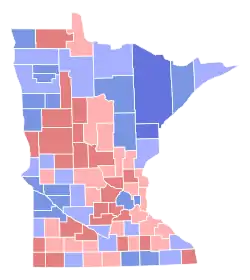 County results | |||||||||||||||||||||||||||||||||||||
| |||||||||||||||||||||||||||||||||||||
The race pitted incumbent Republican senator Rod Grams against former Minnesota State Auditor Mark Dayton.
| Party | Candidate | Votes | % | ±% | |
|---|---|---|---|---|---|
| Democratic (DFL) | Mark Dayton | 1,181,553 | 48.83 | +4.73% | |
| Republican | Rod Grams (Incumbent) | 1,047,474 | 43.29 | -5.76% | |
| Independence | James Gibson | 140,583 | 5.81 | +0.43% | |
| Grassroots | David Daniels | 21,447 | 0.89 | -0.01% | |
| Socialist Workers | Rebecca Ellis | 12,956 | 0.54 | +0.40% | |
| Constitution | David Swan | 8,915 | 0.37 | n/a | |
| Libertarian | Erik D. Pakieser | 6,588 | 0.27 | n/a | |
| Write-in | Ole Savior | 4 | 0.00 | n/a | |
| Majority | 134,079 | 5.54 | |||
| Turnout | 2,419,520 | 74.10 | |||
Mississippi
| |||||||||||||||||
| |||||||||||||||||
Incumbent Republican Trent Lott won re-election to a third term over perennial Democratic candidate Troy Brown.
| Party | Candidate | Votes | % | ±% | |
|---|---|---|---|---|---|
| Republican | Trent Lott (Incumbent) | 654,941 | 65.9 | ||
| Democratic | Troy D. Brown | 314,090 | 31.6 | ||
| Independent | Jim Giles | 9,344 | 0.9 | ||
| Libertarian | Lewis Napper | 8,454 | 0.9 | ||
| Reform | Shawn O'Hara | 7,315 | 0.7 | ||
| Republican hold | Swing | ||||
Missouri
| |||||||||||||||||
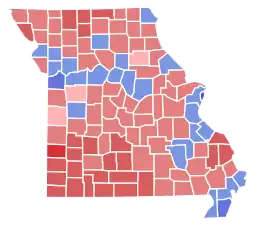 County results | |||||||||||||||||
| |||||||||||||||||
Incumbent Republican John Ashcroft lost the election to Governor Mel Carnahan, despite Carnahan's death three weeks before election day.
In 1998, Ashcroft briefly considered running for president. On January 5, 1999, he announced that he would not seek the presidency and would instead defend his Senate seat in the 2000 election.[40] Missouri Governor Mel Carnahan announced he would contest the Senate election as a Democrat.
In the general election for the state's seat in the U.S. Senate, Ashcroft was facing then-Governor Mel Carnahan in a "tight" race, despite the senator having a larger budget than Carnahan, a war chest that included significant contributions from corporations such as Monsanto Company,[41] headquartered in St. Louis, Missouri, which gave five times more to Ashcroft's campaign fund than to the fund of any other congressional hopeful at the time.[42]
Carnahan was killed in a plane crash three weeks before the November election date. Nonetheless, Carnahan's name remained on the ballot due to Missouri's election laws. Lieutenant Governor Roger B. Wilson became Governor upon Carnahan's death, to serve the remaining term of Carnahan's governorship. Ashcroft suspended all campaigning on the day of the plane crash in light of the tragedy and resumed it eight days before the election date.[43]
The voters of Missouri, by a margin of approximately fifty thousand votes,[44] chose for the U.S. Senate Mel Carnahan, their Governor who had died two weeks before the election. No one had ever posthumously won election to the Senate, though voters on at least three other occasions had until then chosen deceased candidates for the House of Representatives: Clement Woodnutt Miller (D) in California in 1962; Nick Begich (D) in Alaska, 1972; and Hale Boggs (D) in Louisiana, 1972. Hence, John Ashcroft became the first U.S. Senate candidate to be defeated by a dead opponent.[45]
Governor Roger B. Wilson appointed Carnahan's 66-year-old widow, Jean Carnahan, to fill her husband's vacant seat until the next cycle of Senate elections when a successor could be elected to serve out the remaining four years of the deceased Carnahan's would-be term.[46] Ashcroft stated that he hoped the appointment would be "a matter of comfort for Mrs. Carnahan."
| Party | Candidate | Votes | % | ±% | ||
|---|---|---|---|---|---|---|
| Democratic | Mel Carnahan (deceased) | 1,191,812 | 50.5 | |||
| Republican | John Ashcroft (Incumbent) | 1,142,852 | 48.4 | |||
| Green | Evaline Taylor | 10,612 | 0.5 | |||
| Libertarian | Grant Samuel Stauffer | 10,198 | 0.4 | |||
| Reform | Hugh Foley | 4,166 | 0.2 | |||
| Natural Law | Charles Dockins | 1,933 | 0.1 | |||
| Write-ins | Write-in candidates | 13 | ||||
| Turnout | 2,361,586 | |||||
| Democratic gain from Republican | ||||||
Montana
| |||||||||||||||||
 County results | |||||||||||||||||
| |||||||||||||||||
Incumbent Republican Conrad Burns won re-election to a third term.
| Party | Candidate | Votes | % | |
|---|---|---|---|---|
| Democratic | Brian Schweitzer | 59,189 | 66.18 | |
| Democratic | John Driscoll | 30,242 | 33.82 | |
| Total votes | 89,431 | 100.00 | ||
| Party | Candidate | Votes | % | |
|---|---|---|---|---|
| Republican | Conrad Burns (Incumbent) | 102,125 | 100.00 | |
| Total votes | 102,125 | 100.00 | ||
| Party | Candidate | Votes | % | |
|---|---|---|---|---|
| Reform | Sam Rankin | 1,110 | 100.00 | |
| Total votes | 1,110 | 100.00 | ||
Though Sam Rankin won the Reform Party's nomination for the United States Senate, he dropped out of the race over the summer and was replaced by Gary Lee.[48]
Conrad, in a poll released September 21, was leading Schweitzer 48% to 39% that went down from 49% in November 1999. Schweitzer had his polls go up by 11 points.
Burns faced a surprisingly difficult re-election campaign in 2000. In February 1999, he announced that he would break his 1988 promise to only hold office for two terms, claiming "Circumstances have changed, and I have rethought my position."[49] Later that same month, while giving a speech about U.S. dependence on foreign oil to the Montana Equipment Dealers Association, he referred to Arabs as "ragheads". Burns soon apologized, saying he "became too emotionally involved" during the speech.[50]
Burns faced Brian Schweitzer, a rancher from Whitefish, Montana. While Burns attempted to link Schweitzer with presidential candidate Al Gore, whom Schweitzer never met, Schweitzer "effectively portrayed himself as nonpolitical".[51] Schweitzer primarily challenged Burns on the issue of prescription drugs, organizing busloads of senior citizens to take trips to Canada and Mexico for cheaper medicine.[52] Burns charged that Schweitzer favored "Canadian-style government controls"[51] and claimed that senior citizens went to doctors to have "somebody to visit with. There's nothing wrong with them."[52] Burns also faced trouble regarding deaths from asbestos in Libby, Montana. While he initially supported a bill to limit compensation in such cases, he withdrew his support for the bill, under public criticism, and added $11.5 million for the town to an appropriations bill.[51][53]
Burns spent twice as much money as Schweitzer on the election[51] and only defeated him by a slim margin, 51-47 percent, while the state voted 58-33 percent for Republican presidential nominee George W. Bush. Schweitzer went on to become governor in 2004.
| Party | Candidate | Votes | % | ±% | |
|---|---|---|---|---|---|
| Republican | Conrad Burns (Incumbent) | 208,082 | 50.55 | -11.82% | |
| Democratic | Brian Schweitzer | 194,430 | 47.24 | +9.61% | |
| Reform | Gary Lee | 9,089 | 2.2 | ||
| Majority | 13,652 | 3.32 | -21.43% | ||
| Turnout | 411,601 | ||||
| Republican hold | Swing | ||||
Nebraska
| |||||||||||||||||
| |||||||||||||||||
Incumbent Democrat Bob Kerrey decided to retire. Democrat Ben Nelson won the open seat, beating Don Stenberg, the Republican Attorney General of Nebraska.
| Party | Candidate | Votes | % | |
|---|---|---|---|---|
| Democratic | Ben Nelson | 105,661 | 92.12 | |
| Democratic | Al Hamburg | 8,482 | 7.39 | |
| Democratic | Write-ins | 558 | 0.49 | |
| Total votes | 114,701 | 100.00 | ||
| Party | Candidate | Votes | % | |
|---|---|---|---|---|
| Republican | Don Stenberg | 94,394 | 49.99 | |
| Republican | Scott Moore | 41,120 | 21.77 | |
| Republican | David Hergert | 32,228 | 17.07 | |
| Republican | George Grogan | 8,293 | 4.39 | |
| Republican | John DeCamp | 7,469 | 3.96 | |
| Republican | Elliott Rustad | 5,317 | 2.82 | |
| Republican | Write-ins | 21 | 0.01 | |
| Total votes | 188,842 | 100.00 | ||
| Party | Candidate | Votes | % | ±% | |
|---|---|---|---|---|---|
| Democratic | Ben Nelson | 353,093 | 51.00 | -3.78% | |
| Republican | Don Stenberg | 337,977 | 48.82 | +3.81% | |
| Write-ins | 1,280 | 0.18 | |||
| Majority | 15,116 | 2.18 | -7.59% | ||
| Turnout | 692,350 | ||||
| Democratic hold | Swing | ||||
Nevada
| |||||||||||||||||
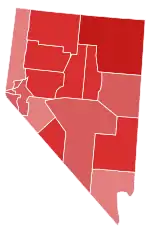 County results | |||||||||||||||||
| |||||||||||||||||
Incumbent Democrat Richard Bryan decided to retire, instead of seeking a third term. Republican nominee John Ensign won the open seat over Democratic attorney Ed Bernstein
| Party | Candidate | Votes | % | |
|---|---|---|---|---|
| Republican | John Ensign | 95,904 | 88.03 | |
| Republican | Richard Hamzik | 6,202 | 5.69 | |
| Republican | None of these candidates | 5,290 | 4.86 | |
| Republican | Fernando Platin, Jr. | 1,543 | 1.42 | |
| Total votes | 108,939 | 100.00 | ||
| Party | Candidate | Votes | % | ±% | ||
|---|---|---|---|---|---|---|
| Republican | John Ensign | 330,687 | 55.09 | +14.09% | ||
| Democratic | Edward M. Bernstein | 238,260 | 39.69 | -11.24% | ||
| None of These Candidates | 11,503 | 1.92 | -1.40% | |||
| Green | Kathryn Rusco | 10,286 | 1.71 | |||
| Libertarian | J. J. Johnson | 5,395 | 0.90 | -0.67% | ||
| Independent American | Ernie Berghof | 2,540 | 0.42 | -1.01% | ||
| Citizens First Party | Bill Grutzmacher | 1,579 | 0.26 | |||
| Majority | 92,427 | 15.40 | +5.47% | |||
| Turnout | 600,250 | |||||
| Republican gain from Democratic | ||||||
New Jersey
| |||||||||||||||||
 County results | |||||||||||||||||
| |||||||||||||||||
Incumbent Democrat Frank Lautenberg decided to retire, rather than seeking a fourth term. The Democratic nominee, former CEO of Goldman Sachs Jon Corzine, defeated the Republican nominee, U.S. Representative Bob Franks, in a close election.
Senator Lautenberg, first elected to the Senate in 1982 in an upset victory over Rep. Millicent Fenwick (R-Bergen), had always been an underdog in all three bids for Senate. He beat Pete Dawkins in 1988 by a 54%-46% margin and held back a challenge from Chuck Haytaian by a smaller margin of 50%-47%. However, popular Governor Christine Todd Whitman was expected to challenge Lautenberg, and opinion polls showed Lautenberg losing by a large margin. He retired but later regretted his decision because Gov. Whitman and Former Governor Tom Kean both declined to run for the Senate. Lautenberg would be elected to the state's other Senate Seat in 2002.
Corzine spent $35 million of his own money into the Democratic primary election alone[57][58] when running against Jim Florio, who served as the 49th Governor of New Jersey from 1990 to 1994. Governor Florio was unpopular during his tenure in office. Most notably, he signed a $2.8 Billion tax increase in 1990. It caused his party to lose control of the state government for a decade, and cost the Governor his re-election bid in 1993.
Corzine, running as an outsider, was endorsed by State senator Raymond Zane (D-Gloucester), State senator Wayne Bryant (D-Camden), State senator John Adler (D-Camden), U.S Representative Bob Menendez (D-Hudson) and U.S senator Bob Torricelli (D-NJ). Florio was endorsed by the State Party, Assemblyman Joe Doria (D-Hudson) and senator John Lynch (D-Middlesex).
Corzine defeated Florio in the primary and then defeated Bob Franks in the general election.
| Party | Candidate | Votes | % | ±% | |
|---|---|---|---|---|---|
| Democratic | Jon Corzine | 251,216 | 58.0 | ||
| Democratic | James Florio | 182,212 | 42.0 | ||
| Party | Candidate | Votes | % | ±% | |
|---|---|---|---|---|---|
| Republican | Bob Franks | 98,370 | 35.7 | ||
| Republican | William Gormley | 94,010 | 34.1 | ||
| Republican | James W. Treffinger | 48,674 | 17.7 | ||
| Republican | Murray Sabrin | 34,629 | 12.6 | ||
Franks, a moderate Republican,[60] attacked Corzine for "trying to buy the election and of advocating big-government spending programs that the nation can ill afford." Corzine accused Franks of wanting to dismantle the Social Security system because he supported Governor George W. Bush's partial privatization plan.[61]
During the campaign, Corzine refused to release his income tax return records. He claimed an interest in doing so, but he cited a confidentiality agreement with Goldman Sachs. Skeptics argued that he should have followed the example of his predecessor Robert Rubin, who converted his equity stake into debt upon leaving Goldman.[62]
Corzine campaigned for state government programs including universal health care, universal gun registration, mandatory public preschool, and more taxpayer funding for college education.[63][64] He pushed affirmative action and same-sex marriage.[65] David Brooks considered Corzine so liberal that although his predecessor was also a Democrat, his election helped shift the Senate to the left.[66]
During Corzine's campaign for the United States Senate, he made some controversial off-color statements. When introduced to a man with an Italian name who said he was in the construction business, Corzine quipped: "Oh, you make cement shoes!" according to Emanuel Alfano, chairman of the Italian-American One Voice Committee. Alfano also reported that when introduced to a lawyer named David Stein, Corzine said: "He's not Italian, is he? Oh, I guess he's your Jewish lawyer who is here to get the rest of you out of jail."[67] Corzine denied mentioning religion, but did not deny the quip about Italians, claiming that some of his own ancestors were probably Italian,[68] or maybe French.[69]
Also in 2000, Corzine denied having paid off African-American ministers, when in fact the foundation controlled by him and his wife had paid one influential black church $25,000.[70] Rev. Reginald T. Jackson, director of the Black Ministers Council, had campaigned against a form of racial profiling whereby police officers stop minority drivers and had gotten New Jersey state police superintendent, Carl A. Williams, fired. Corzine had donated to Jackson prior to getting what appears to be a reciprocal endorsement.[71]
Franks generally trailed Corzine in the polls until the very last week, when he pulled even in a few polls. Corzine spent $63 million, while Franks spent only $6 million.[72] Despite being heavily outspent, Franks lost by only three percentage points, doing better that year than Republican Governor George W. Bush in the presidential election, who obtained just 40% of the vote in the state.[73]
| Party | Candidate | Votes | % | ±% | |
|---|---|---|---|---|---|
| Democratic | Jon Corzine | 1,511,237 | 50.11 | ||
| Republican | Bob Franks | 1,420,267 | 47.10 | ||
| Green | Bruce Afran | 32,841 | 1.09 | ||
| Reform | Pat DiNizio | 19,312 | 0.64 | ||
| Libertarian | Emerson Ellett | 7,241 | 0.24 | ||
| Independent | Dennis A. Breen | 6,061 | 0.20 | ||
| Trust in God | J. M. Carter | 5,657 | 0.19 | ||
| Conservative | Lorraine LaNeve | 3,836 | 0.13 | ||
| Socialist | Gregory Pason | 3,365 | 0.11 | ||
| Socialist Workers | Nancy Rosenstock | 3,309 | 0.11 | ||
| God Bless Jersey | George Gostigian | 2,536 | 0.08 | ||
| Majority | 90,970 | 3.01 | |||
| Turnout | |||||
| Democratic hold | Swing | ||||
New Mexico
| |||||||||||||||||
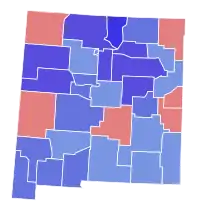 County results | |||||||||||||||||
| |||||||||||||||||
Incumbent Democrat Jeff Bingaman won re-election to a fourth term, beating Republican former Congressman Bill Redmond.[74]
| Party | Candidate | Votes | % | |
|---|---|---|---|---|
| Democratic | Jeff Bingaman (Incumbent) | 124,887 | 100.00 | |
| Total votes | 124,887 | 100.00 | ||
| Party | Candidate | Votes | % | |
|---|---|---|---|---|
| Republican | Bill Redmond | 43,780 | 60.39 | |
| Republican | Steve Pearce | 15,628 | 21.56 | |
| Republican | William F. Davis | 13,083 | 18.05 | |
| Total votes | 72,491 | 100.00 | ||
| Party | Candidate | Votes | % | ±% | |
|---|---|---|---|---|---|
| Democratic | Jeff Bingaman (Incumbent) | 363,744 | 61.70 | +7.73% | |
| Republican | Bill Redmond | 225,517 | 38.25 | -7.74% | |
| Write-ins | 265 | 0.04 | |||
| Majority | 138,227 | 23.45 | +15.47% | ||
| Turnout | 589,525 | ||||
| Democratic hold | Swing | ||||
New York
| |||||||||||||||||
| |||||||||||||||||
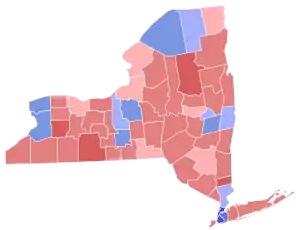 Results by county
Clinton: 40-50% 50-60% 60-70% 70-80% 80-90% Lazio: 40-50% 50-60% 60-70% | |||||||||||||||||
| |||||||||||||||||
Hillary Rodham Clinton, then First Lady of the United States and the first First Lady to run for political office, defeated Congressman Rick Lazio. The general election coincided with the U.S. presidential election.
The race began in November 1998 when four-term incumbent Daniel Patrick Moynihan (D) announced his retirement. Both the Democratic Party and Republican Party sought high-profile candidates to compete for the open seat. By early 1999 Clinton and Mayor of New York City Rudolph Giuliani were the likely respective nominees. Clinton and her husband, President Bill Clinton, purchased a house in Chappaqua, New York, in September 1999; she thereby became eligible for the election, although she faced characterizations of carpetbagging since she had never resided in the state before. The lead in statewide polls swung from Clinton to Giuliani and back to Clinton as the campaigns featured both successful strategies and mistakes as well as dealing with current events. In late April and May 2000, Giuliani's medical, romantic, marital, and political lives all collided in a tumultuous four-week period, culminating in his withdrawing from the race on May 19.
The Republicans chose lesser-known Congressman Rick Lazio to replace him. The election included a record $90 million in campaign expenditures between Clinton, Lazio, and Giuliani and national visibility. Clinton showed strength in normally Republican upstate areas and a debate blunder by Lazio solidified Clinton's previously shaky support among women.
| Party | Candidate | Votes | % | |
|---|---|---|---|---|
| Democratic | Hillary Rodham Clinton | 565,353 | 82 | |
| Democratic | Mark McMahon | 124,315 | 18 | |
The contest drew considerable national attention and both candidates were well-funded. By the end of the race, Democrat Clinton and Republicans Lazio and Giuliani had spent a combined $90 million,[77] the most of any U.S. Senate race in history.[77][78] Lazio outspent Clinton $40 million to $29 million,[77] with Clinton also getting several million dollars in soft money from Democratic organizations.[77] Among Clinton antagonists circles, direct mail-based fundraising groups such as the Emergency Committee to Stop Hillary Rodham Clinton sprung up,[79] sending out solicitations regarding the "carpetbagging" issue: just as one Clinton leaves office, another one runs.
Clinton secured a broad base of support, including endorsements from conservation groups[80] and organized labor,[81] but notably not the New York City police union which endorsed Lazio while firefighters supported Hillary.[82][83] While Clinton had a solid base of support in New York City, candidates and observers expected the race to be decided in upstate New York where 45 percent of the state's voters live. During the campaign, Clinton vowed to improve the economic picture in upstate New York, promising that her plan would deliver 200,000 New York jobs over six years. Her plan included specific tax credits with the purpose of rewarding job creation and encouraging business investment, especially in the high-tech sector. She called for targeted personal tax cuts for college tuition and long-term care.[84] Lazio faced a unique tactical problem campaigning upstate. The major issue there was the persistently weak local economy, which Lazio hoped to link to his opponent's husband's tenure in office. Attacks on the state of the upstate economy were frequently interpreted as criticism of incumbent Republican governor George Pataki, however, limiting the effect of this line of attack.
Opponents continued to make the carpetbagging issue a focal point throughout the race and during debates.[85] Talk radio hammered on this, with New York-based Sean Hannity issuing a daily mantra, "Name me three things Hillary Clinton has ever done for the people of New York!" Clinton's supporters pointed out that the state was receptive to national leaders, such as Robert F. Kennedy who was elected to the Senate in 1964 despite similar accusations. In the end, according to exit polls conducted in the race, a majority of the voters dismissed the carpetbagging issue as unimportant.[86]
During the campaign, Independent Counsel Robert Ray filed his final reports regarding the long-running Whitewater,[87] "Travelgate",[88] and "Filegate"[89] investigations of the White House, each of which included specific investigations of Hillary Clinton actions. The reports exonerated her on the files matter,[89] said there was insufficient evidence regarding her role in Whitewater,[87] and said that she had made factually false statements regarding the Travel Office firings but there was insufficient evidence to prosecute her.[88] Although The New York Times editorialized that the release of the reports seemed possibly timed to coincide with the Senate election,[90] in practice the findings were not seen as likely to sway many voters' opinions.[91]
A September 13, 2000 debate between Lazio and Clinton proved important. Lazio was on the warpath against soft money and the amounts of it coming from the Democratic National Committee into Clinton's campaign, and challenged Clinton to agree to ban soft money from both campaigns. He left his podium and waved his proposed paper agreement in Clinton's face;[92] many debate viewers thought he had invaded her personal space[93] and as a result Clinton's support among women voters solidified.[92]
Late in the campaign Lazio criticised Clinton for accepting campaign donations from various Arab groups in the wake of the USS Cole attack. This issue caused former New York Mayor Ed Koch to take out ads telling Lazio to "stop with the sleaze already,"[92] and did not change the dynamic of the race.
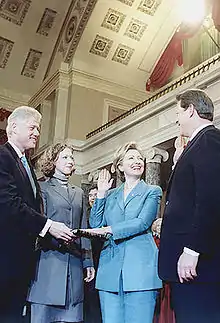
| Party | Candidate | Votes | % | ±% | |
|---|---|---|---|---|---|
| Democratic | Hillary Rodham Clinton | 3,562,415 | |||
| Working Families | Hillary Rodham Clinton | 102,094 | |||
| Liberal | Hillary Rodham Clinton | 82,801 | |||
| total | Hillary Rodham Clinton | 3,747,310 | 55.27 | +0.02 | |
| Republican | Rick Lazio | 2,724,589 | |||
| Conservative | Rick Lazio | 191,141 | |||
| total | Rick Lazio | 2,915,730 | 43.01 | +1.5 | |
| Independence | Jeffrey Graham | 43,181 | 0.64 | -0.08 | |
| Green | Mark Dunau | 40,991 | 0.60 | ||
| Right to Life | John Adefope | 21,439 | 0.32 | -1.68 | |
| Libertarian | John Clifton | 4,734 | 0.07 | -0.31 | |
| Constitution | Louis Wein | 3,414 | 0.05 | ||
| Socialist Workers | Jacob Perasso | 3,040 | 0.04 | -0.27 | |
| Blank/scattering | 179,823 | ||||
| Majority | 831,580 | 12.27 | |||
| Turnout | 6,779,839 | ||||
| Democratic hold | Swing | ||||
- Per New York State law, Clinton and Lazio totals include their minor party line votes: Liberal Party of New York and Working Families Party for Clinton, Conservative Party for Lazio.
Clinton won the election on November 7 with 55 percent of the vote to Lazio's 43 percent,[94] a difference larger than most observers had expected.[95][96] Clinton won the traditionally Democratic base of New York City by large margins, and carried suburban Westchester County, but lost heavily populated Long Island, part of which Lazio represented in Congress. She won surprising victories in Upstate counties, such as Cayuga, Rensselaer, and Niagara, to which her win has been attributed.
In comparison with other results, this 12 percentage point margin was smaller than Gore's 25 point margin over Bush in the state Presidential contest, was slightly larger than the 10 point margin by which fellow New York senator Charles Schumer defeated incumbent Republican Al D'Amato in the hotly contested 1998 race, but was considerably smaller than the 47 point margin by which senator Schumer won re-election in 2004 against little-known Republican challenger Howard Mills.[97][98] The victory of a Democrat in the Senate election was not assured, because in recent decades the Republicans had won about half the elections for governor and senator.
Lazio's bid was handicapped by the weak performance of George W. Bush in New York in the 2000 election,[96] but it was also clear Hillary Clinton had made substantial inroads in upstate New York prior to Lazio's entry into the race.[96] Exit polls also showed a large gender gap with Clinton running stronger than expected among moderate women and unaffiliated women.[99]
North Dakota
| |||||||||||||||||
| |||||||||||||||||
Incumbent Dem-NPL U.S. senator Kent Conrad won re-election to a third term, over Republican Naval Reserve officer Duane Sand.[100]
| Party | Candidate | Votes | % | ±% | |
|---|---|---|---|---|---|
| Democratic-NPL | Kent Conrad (Incumbent) | 176,470 | 61.37 | ||
| Republican | Duane Sand | 111,069 | 38.63 | ||
| Majority | 65,401 | 22.74 | |||
| Turnout | 287,539 | 100 | |||
Ohio
| Turnout | 63.6% (Registered Voters) | ||||||||||||||||
|---|---|---|---|---|---|---|---|---|---|---|---|---|---|---|---|---|---|
| |||||||||||||||||
 County results | |||||||||||||||||
| |||||||||||||||||
Incumbent Republican Mike DeWine won re-election to a second term, beating Democrat Ted Celeste, real estate developer and brother of former Ohio Governor Dick Celeste.
| Party | Candidate | Votes | % | |
|---|---|---|---|---|
| Republican | Mike DeWine (Incumbent) | 1,029,860 | 79.51 | |
| Republican | Ronald Richard Dickson | 161,185 | 12.44 | |
| Republican | Frank Cremeans | 104,219 | 8.05 | |
| Total votes | 1,295,264 | 100 | ||
| Party | Candidate | Votes | % | |
|---|---|---|---|---|
| Democratic | Ted Celeste | 375,205 | 43.86 | |
| Democratic | Marvin McMickle | 208,291 | 24.35 | |
| Democratic | Richard Cordray | 202,345 | 23.65 | |
| Democratic | Dan Radakovich | 69,620 | 8.14 | |
| Total votes | 855,461 | 100 | ||
| Party | Candidate | Votes | % | ±% | |
|---|---|---|---|---|---|
| Republican | Mike DeWine (Incumbent) | 2,665,512 | 59.9 | +6.5% | |
| Democratic | Ted Celeste | 1,595,066 | 35.9 | -3.3% | |
| Libertarian | John McAlister | 116,724 | 2.6 | 0.00% | |
| Natural Law Party (US) | John Eastman | 70,713 | 1.6 | 0.00% | |
| Write-in | 786 | 0.00 | 0.00% | ||
| Majority | 1,076,446 | ||||
| Turnout | 4,448,801 | 63.6 | |||
| Republican hold | Swing | ||||
Pennsylvania
| |||||||||||||||||
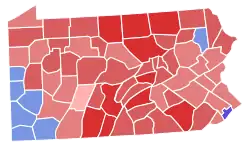 County results | |||||||||||||||||
| |||||||||||||||||
Incumbent Republican Rick Santorum won re-election to a second term over Democratic Congressman Ron Klink.[103]
Santorum had gained a reputation as a polarizing figure during his first term in the Senate, but he entered the race with a large fundraising advantage and high levels of support from the political right. The contest began for Democrats with a brutal primary challenge; U.S. Congressman Klink narrowly bested State senator Allyson Schwartz and former Lieutenant Governor nominee Tom Foley by running on the message that he was the only candidate capable of defeating the Republican. Klink was viewed as a viable choice because he was a traditional Democrat on most issues and had strong union ties but also was pro-life, which Democrats hoped would return votes to their party in the heavily Catholic but economically liberal coal regions of the state. However, enthusiasm around Klink's campaign quickly waned. Liberal Democrats, particularly in the Philadelphia area, balked at donating to a socially conservative candidate who was almost unknown in their area. He was also badly outspent, leaving him unable to expand his presence in the state; he didn't run a single ad on Philadelphia television. Santorum, in contrast, successfully balanced his national recognition on social issues with local concerns en route to a surprisingly large victory.[104]
| Party | Candidate | Votes | % | ±% | |
|---|---|---|---|---|---|
| Republican | Rick Santorum (Incumbent) | 2,481,962 | 52.4 | +3.0% | |
| Democratic | Ron Klink | 2,154,908 | 45.5 | -8.6% | |
| Libertarian | John Featherman | 45,775 | 1.0 | -0.7% | |
| Constitution | Lester Searer | 28,382 | 0.6 | +0.6% | |
| Reform | Robert Domske | 24,089 | 0.5 | +0.5% | |
| Majority | 327,054 | 6.9 | +4.4% | ||
| Total votes | 4,735,116 | 100 | |||
Rhode Island
| |||||||||||||||||
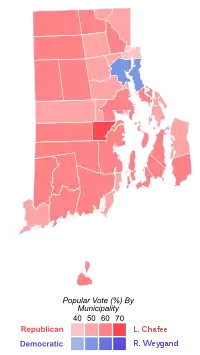 Municipal results | |||||||||||||||||
| |||||||||||||||||
Incumbent Republican Lincoln Chafee was elected his first full term after being appointed in 1999 to fill the seat of his father John Chafee who died on October 24, 1999. As of 2020, this is the last Senate election in Rhode Island won by a Republican.
| Party | Candidate | Votes | % | |
|---|---|---|---|---|
| Democratic | Robert Weygand | 51,769 | 57.49 | |
| Democratic | Richard A. Licht | 38,281 | 42.51 | |
| Total votes | 90,050 | 100.00 | ||
| Party | Candidate | Votes | % | |
|---|---|---|---|---|
| Republican | Lincoln Chafee (Incumbent) | 2,221 | 100.00 | |
| Total votes | 2,221 | 100.00 | ||
| Party | Candidate | Votes | % | ±% | |
|---|---|---|---|---|---|
| Republican | Lincoln Chafee (Incumbent) | 222,588 | 56.88 | -7.65% | |
| Democratic | Robert Weygand | 161,023 | 41.15 | +5.67% | |
| Reform | Christopher Young | 4,107 | 1.05 | ||
| Independent | Kenneth Proulx | 3,635 | 0.93 | ||
| Majority | 61,565 | 15.73 | -13.32% | ||
| Turnout | 391,353 | ||||
| Republican hold | Swing | ||||
Tennessee
| |||||||||||||||||
| |||||||||||||||||
Incumbent Republican Bill Frist won re-election to a second term.
The Democratic primary was held August 3, 2000. In a field of five candidates, Jeff Clark, a professor at Middle Tennessee State University, edged out John Jay Hooker to win the nomination.[107][108]
| Candidate | Votes | % | ± | |
|---|---|---|---|---|
| Jeff Clark | 64,851 | 34 | ||
| John Jay Hooker | 64,041 | 34 | ||
| Mary Taylor-Shelby | 28,604 | 15 | ||
| Shannon Wood | 25,372 | 13 | ||
| James Looney | 6,354 | 3% | ||
| Write-ins | 218 | 0% | ||
| Party | Candidate | Votes | % | ±% | |
|---|---|---|---|---|---|
| Republican | Bill Frist (Incumbent) | 1,255,444 | 65.1 | ||
| Democratic | Jeff Clark | 621,152 | 32.2 | ||
| Green | Tom Burrell | 25,815 | 1.3 | ||
| Independent | Charles F. Johnson | 10,004 | 0.5 | ||
| Independent | Robert Watson | 8,416 | 0.4 | ||
| Independent | David Jarrod Ownby | 4,388 | 0.2 | ||
| Independent | Joel Kinstle | 3,135 | 0.2 | ||
| Write-in | 259 | 0.0 | |||
| Majority | |||||
| Turnout | |||||
| Republican hold | Swing | ||||
Texas
| |||||||||||||||||
| |||||||||||||||||
Incumbent Republican Kay Bailey Hutchison won re-election to a second term, beating Democrat Gene Kelly, a retired attorney.[109]
| Party | Candidate | Votes | % | ±% | |
|---|---|---|---|---|---|
| Republican | Kay Bailey Hutchison (Incumbent) | 4,078,954 | 65.0 | ||
| Democratic | Gene Kelly | 2,025,024 | 32.4 | ||
| Green | Douglas S. Sandage | 91,329 | 1.5 | ||
| Libertarian | Mary J. Ruwart | 72,657 | 1.2 | ||
| Majority | |||||
| Turnout | |||||
| Republican hold | Swing | ||||
Utah
| |||||||||||||||||
 County results | |||||||||||||||||
| |||||||||||||||||
Incumbent Republican Orrin Hatch won re-election to a fifth term, beating Democratic State senator Scott N. Howell.
| Party | Candidate | Votes | % | ±% | |
|---|---|---|---|---|---|
| Republican | Orrin Hatch (Incumbent) | 504,803 | 65.58 | -3.22% | |
| Democratic | Scott N. Howell | 242,569 | 31.51 | +3.22% | |
| Independent American | Carlton Edward Bowen | 11,938 | 1.55 | +1.27% | |
| Libertarian | Jim Dexter | 10,394 | 1.35 | ||
| Majority | 262,234 | 34.07 | -6.44% | ||
| Turnout | 769,704 | ||||
| Republican hold | Swing | ||||
Vermont
| |||||||||||||||||
| |||||||||||||||||
Incumbent Republican Jim Jeffords won re-election to a third term in office, over Ed Flanagan, Vermont Auditor of Accounts. Jeffords switched from being a Republican to an independent, who would caucus with the Democratic Party, thus breaking the 50-50 lock. As of 2017, this is the last Senate election in Vermont won by a Republican.
| Party | Candidate | Votes | % | |
|---|---|---|---|---|
| Democratic | Ed Flanagan | 17,440 | 49.24 | |
| Democratic | Jan Backus | 16,444 | 46.43 | |
| Democratic | Write-ins | 1,533 | 4.33 | |
| Total votes | 30,229 | 100.00 | ||
| Party | Candidate | Votes | % | |
|---|---|---|---|---|
| Republican | Jim Jeffords (Incumbent) | 60,234 | 77.79 | |
| Republican | Rick Hubbard | 15,991 | 20.65 | |
| Republican | Write-ins | 1,204 | 1.55 | |
| Total votes | 77,429 | 100.00 | ||
| Party | Candidate | Votes | % | ±% | |
|---|---|---|---|---|---|
| Republican | Jim Jeffords (Incumbent) | 189,133 | 65.56 | +15.24% | |
| Democratic | Ed Flanagan | 73,352 | 25.43 | -15.14% | |
| Constitution | Charles W. Russell | 10,079 | 3.49 | ||
| Independent | Rick Hubbard | 5,366 | 1.86 | ||
| Grassroots | Billy Greer | 4,889 | 1.69 | ||
| Libertarian | Hugh Douglas | 3,843 | 1.33 | ||
| Liberty Union | Jerry Levy | 1,477 | 0.51 | ||
| Write-ins | 361 | 0.13 | |||
| Majority | 115,781 | 40.13 | +30.38% | ||
| Turnout | 288,500 | ||||
| Republican hold | Swing | ||||
Virginia
| Turnout | 54.0% (voting eligible)[111] | ||||||||||||||||
|---|---|---|---|---|---|---|---|---|---|---|---|---|---|---|---|---|---|
| |||||||||||||||||
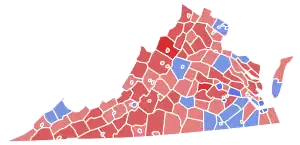 U.S. Senate election results map. Red denotes counties/districts won by Allen. Blue denotes those won by Robb. | |||||||||||||||||
| |||||||||||||||||
Incumbent Democrat Chuck Robb ran for a third term, but lost to Republican George Allen.[112][113]
| Party | Candidate | Votes | % | ±% | ||
|---|---|---|---|---|---|---|
| Republican | George Allen | 1,420,460 | 52.26 | +9.38% | ||
| Democratic | Chuck Robb (Incumbent) | 1,296,093 | 47.68 | +2.07% | ||
| Write-ins | 1,748 | 0.06 | -0.01% | |||
| Majority | 124,367 | 4.58 | +1.85% | |||
| Turnout | 2,718,301 | |||||
| Republican gain from Democratic | ||||||
Washington
| Turnout | 75.46% | ||||||||||||||||
|---|---|---|---|---|---|---|---|---|---|---|---|---|---|---|---|---|---|
| |||||||||||||||||
 County results
| |||||||||||||||||
| |||||||||||||||||
Incumbent Republican Slade Gorton ran for a third consecutive term (fourth overall), but was unseated for a second time (the first being 1986) by Democratic candidate, former Congresswoman Maria Cantwell.
Since Maria Cantwell had only won by 2,229 votes, an automatic recount was triggered. Cantwell won the recount, but it was still one of the closest elections in Washington state history. On November 17, 2000, Washington Secretary of State Sam Reed declared Cantwell the senator-elect.
| Party | Candidate | Votes | % | ±% | |
|---|---|---|---|---|---|
| Democratic | Maria Elaine Cantwell | 1,199,437 | 48.73 | +4.48% | |
| Republican | Slade Gorton (Incumbent) | 1,197,208 | 48.64 | -7.11% | |
| Libertarian | Jeff Jared | 64,734 | 2.63 | +2.6% | |
| Plurality | 2,229 | ||||
| Turnout | 2,461,379 | 100 | +761,206 | ||
West Virginia
| |||||||||||||||||
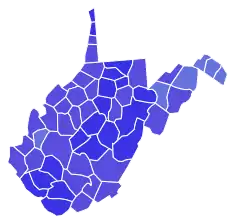 County results | |||||||||||||||||
| |||||||||||||||||
Incumbent Democrat Robert Byrd won re-election to an eighth term. He won every county and congressional district in the state.
| Party | Candidate | Votes | % | ±% | |
|---|---|---|---|---|---|
| Democratic | Robert Byrd (Incumbent) | 469,215 | 77.8 | ||
| Republican | David T. Gallaher | 121,635 | 20.2 | ||
| Libertarian | Joe Whelan | 12,627 | 2.1 | ||
| Majority | |||||
| Turnout | |||||
| Democratic hold | Swing | ||||
Wisconsin
| |||||||||||||||||
| |||||||||||||||||
Incumbent Democrat Herb Kohl won re-election to a third term.
| Party | Candidate | Votes | % | ±% | |
|---|---|---|---|---|---|
| Democratic | Herb Kohl (Incumbent) | 1,563,238 | 61.5 | ||
| Republican | John Gillespie | 940,744 | 37.0 | ||
| Libertarian | Tim Peterson | 21,348 | 0.8 | ||
| Independent | Eugene A. Hem | 9,555 | 0.4 | ||
| Constitution | Robert R. Raymond | 4,296 | 0.2 | ||
| Independent | Write-ins | 902 | 0.0 | ||
| Democratic hold | Swing | ||||
Wyoming
| |||||||||||||||||
 County results | |||||||||||||||||
| |||||||||||||||||
Incumbent Republican Craig Thomas won re-election to a second term over Democratic mine worker Mel Logan.[115]
| Party | Candidate | Votes | % | |
|---|---|---|---|---|
| Democratic | Mel Logan | 16,530 | 64.59 | |
| Democratic | Sheldon Sumey | 9,062 | 35.41 | |
| Total votes | 29,612 | 100.00 | ||
| Party | Candidate | Votes | % | |
|---|---|---|---|---|
| Republican | Craig Thomas (Incumbent) | 68,132 | 100.00 | |
| Total votes | 68,132 | 100.00 | ||
| Party | Candidate | Votes | % | ±% | |
|---|---|---|---|---|---|
| Republican | Craig Thomas (Incumbent) | 157,622 | 73.77 | +14.90% | |
| Democratic | Mel Logan | 47,087 | 22.04 | -17.27% | |
| Libertarian | Margaret Dawson | 8,950 | 4.19 | +2.37% | |
| Majority | 110,535 | 51.73 | +32.17% | ||
| Turnout | 213,659 | ||||
| Republican hold | Swing | ||||
See also
Notes
- Because the Vice President of the United States has the power to break ties in the Senate, a Senate majority requires either 51 Senate seats without control of the vice presidency or 50 seats with control of the vice presidency.
- Republicans retained a working majority once the George W. Bush administration assumed office. Vice President Dick Cheney had the ability to break ties as President of the Senate after taking office on January 20.
- Per 21-2-540 (e) of the Georgia Official Code, unless candidates are nominated in a special primary, the special general election ballot remains nonpartisan. The national totals for each of the parties exclude their hypothetical Georgia vote totals.
- Due to the 50–50 tie between Democrats and Republicans, the vice president casts the tie-breaking vote in organizing the Senate. Because the Clinton administration remained in office until January 20, Democrats briefly gained control of the Senate for a few weeks, effectively making Tom Daschle majority leader during that time. When the George W. Bush administration assumed office, the Republican Party regained control of the Senate as a result of the 2000 United States presidential election. Later in mid-2001, Vermont senator Jim Jeffords became an independent and caucused with the Democrats, allowing them to again gain control of the Senate. Daschle remained majority leader until early 2003 after Republican gains in the 2002 United States Senate elections.
- Totals do not include participating voters who declined to cast a vote for U.S. Senate. Candidates in the Georgia special election to fill the seat of deceased senator Paul Coverdell were required to be non-partisan. However, Zell Miller and Mack Mattingly were added to the Democratic and Republican columns respectively and all the other candidates were added to the Independent column.
- Appointee elected.
- Mel Carnahan, the Democrat Senator-elect as a result of the November election, died on October 16; Democrat Jean Carnahan was appointed in his place and seated at the beginning of the 107th United States Congress on January 3, 2001.
- Washington was the "tipping-point state".
References
- Source: Clerk of the House of Representatives (June 21, 2001). "Statistics of the Presidential and Congressional Election of November 7, 2000" – via House.gov.
- "THE 2000 ELECTIONS: WEST".
- "Where the candidates stand".
- "Los Angeles Times: Archives - CALIFORNIA ELECTIONS / U.S. SENATE". Pqasb.pqarchiver.com. February 17, 2000. Retrieved December 20, 2017.
- http://nl.newsbank.com/nl-search/we/Archives?p_product= FB&p_theme= fb&p_action= search&p_maxdocs= 200&p_topdoc= 1&p_text_direct-0= 0EAE7E0A39B78DE7&p_field_direct-0= document_id&p_perpage= 10&p_sort= YMD_date:D&s_trackval= GooglePM
- "Newsbank | The Sacramento Bee & Sacbee.com". Nl.newsbank.com. July 31, 2000. Retrieved December 20, 2017.
- "The Hartford Courant Article Archive - Senator To Continue Re-Election Efforts, Too Law Permits Statewide And Nationwide Runs". Pqasb.pqarchiver.com. August 8, 2000. Retrieved December 20, 2017.
- Herszenhorn, David M. (August 8, 2000). "Lieberman Can Run With a Foot in 2 Races". The New York Times. Archived from the original on July 14, 2012.
- Weiss, Joanna (August 8, 2000). "IN HOME STATE, THEY SEE A CANDIDATE WITH BRAINS AND 'THE MAGIC'". The Boston Globe. p. A24.
- "Record-Journal - Google News Archive Search". news.google.com. Retrieved December 20, 2017.
- "The Day - Google News Archive Search". news.google.com. Retrieved December 20, 2017.
- "CT US Senate Race - Nov 07, 2000". Our Campaigns. Retrieved December 20, 2017.
- "Archived copy". Archived from the original on October 3, 2012. Retrieved November 8, 2017.CS1 maint: archived copy as title (link)
- "In Tight Race, Health Issues Dog Delaware'S Roth". Pqasb.pqarchiver.com. October 26, 2000. Retrieved December 20, 2017.
- "Philadelphia Inquirer: Search Results". nl.newsbank.com. Retrieved December 20, 2017.
- "Delaware U.S. Race, 2000 - Sussex County Online, Delaware". Sussexcountyonline.com. November 7, 2000. Retrieved December 20, 2017.
- "Boston.com / Politics / Campaign 2000 / News". Cache.boston.com. October 26, 2000. Retrieved December 20, 2017.
- "Archived copy". Archived from the original on July 18, 2011. Retrieved March 27, 2011.CS1 maint: archived copy as title (link)
- "Sarasota Herald-Tribune - Google News Archive Search". news.google.com. Retrieved December 20, 2017.
- RICK BRAGG (October 18, 2000). "THE 2000 CAMPAIGN: A FLORIDA RACE; 2 Senate Candidates Eagerly Woo Moderates - The New York Times". Select.nytimes.com. Archived from the original on July 14, 2012. Retrieved December 20, 2017.
- "Miami Herald: Search Results". nl.newsbank.com. Retrieved December 20, 2017.
- "News-JournalOnline.com: Daytona Beach news, sports, weather and classifieds | The News Journal | Daytona Beach FL". Nl.newsbank.com. Retrieved December 20, 2017.
- "Macon Telegraph: Search Results". nl.newsbank.com. Retrieved December 20, 2017.
- "Mattingly, Miller spar on records". chronicle.augusta.com. October 16, 2000. Retrieved December 20, 2017.
- "Ledger Enquirer: Search Results". nl.newsbank.com. Retrieved December 20, 2017.
- "THE 2000 ELECTIONS: STATE BY STATE; WEST - The New York Times". Nytimes.com. November 9, 2000. Retrieved December 20, 2017.
- "United States Senator". Indiana of Secretary of State. November 7, 2000. Archived from the original on July 24, 2008. Retrieved November 8, 2008.
- "New England: Big Prize Gets Little Attention". Pqasb.pqarchiver.com. February 27, 2000. Retrieved December 20, 2017.
- "Sun Journal - Google News Archive Search". news.google.com. Retrieved December 20, 2017.
- Dianne Feinstein Primaries kind to incumbents, The Deseret News (Associated Press) – March 8, 2000.
- Senate rivals face off in only TV debate Sarbanes defends record of 4 terms against Rappaport accusations. Pqasb.pqarchiver.com (October 20, 2000). Retrieved on June 17, 2011.
- MD US Senate - R Primary, Our Campaigns.
- Rappaport to focus on crime in race with Sarbanes, The Washington Times, March 9, 2000.
- MARYLAND NOTEBOOK; Sarbanes-Rappaport Forum A Matter of Great Debate. Pqasb.pqarchiver.com (October 26, 2000). Retrieved on June 17, 2011.
- "Breaking News, Analysis, Politics, Blogs, News Photos, Video, Tech Reviews - TIME.com". Time. October 14, 2000.
- "Congress Races Test Coattails". Newsday. September 4, 2000.
- "The Argus-Press - Google News Archive Search". news.google.com. Retrieved December 20, 2017.
- General Election Results, Minnesota Secretary of State Archived November 10, 2012, at the Wayback Machine
- "Ashcroft decides not to jump into 2000 race", CNN, January 5, 1999.
- Schanbacher, William D. The Politics of Food: The Global Conflict between Food Security and Food Sovereignty, Praeger Security International; February 26, 2010; ISBN 978-0313363283; p. 47.
- Harrison, Beth B. Shedding Light on Genetically Engineered Food: What You Don't Know About the Food You're Eating and What You Can Do to Protect Yourself, iUniverse, Inc., November 13, 2007, ISBN 978-0595451807
- "The 2000 elections: Missouri; Senator Refuses To Challenge Loss" by John W. Fountain, The New York Times, November 9, 2000.
- "Statistics of the Presidential and Congressional Election of November 7, 2000". Clerk.house.gov. Retrieved December 20, 2017.
- "Five people have won election to Congress, despite being dead" by Philip Bump, The Washington Post, October 1, 2014.
- Wayne, Stephen J. & Clyde Wilcox. The Election of the Century: The 2000 Election and What it Tells Us About American Politics in the New Millennium, Routledge, February 20, 2002, ISBN 978-0765607430; ch.10.
- "Archived copy" (PDF). Archived from the original (PDF) on December 28, 2013. Retrieved July 5, 2014.CS1 maint: archived copy as title (link)
- "Reform candidate blasts corporations". Billingsgazette.com. October 13, 2000. Retrieved August 15, 2012.
- George Will, "…Terms Unlimited", The Washington Post, June 24, 1999.
- Al Kamen, "Burns's A List: African Americans, Arabs", The Washington Post, March 12, 1999.
- Michael Barone, The Almanac of American Politics 2004, National Journal Group.
- William Booth, "Mont. Rancher Mounts Brawny Challenge; Crusty GOP Incumbent Finds Race Tightening Against an Equally Rough-Hewn Opponent", The Washington Post, October 31, 2000.
- Al Kamen, "Town Getting $ 11 Million in Salve From Burns", The Washington Post, May 12, 2000.
- "Nebraska Secretary of State". Sos.ne.gov. June 6, 2000. Retrieved December 20, 2017.
- "Nebraska Secretary of State". Sos.ne.gov. August 22, 2000. Retrieved December 20, 2017.
- "NVSOS.GOV - Elections Results: Official 2000 Primary Election Results". nvsos.gov. Retrieved December 20, 2017.
- Halbfinger, David M. (October 13, 2000). "Franks Accuses Corzine of Trying To Buy His Way Into Senate Seat". The New York Times.
- "Franks and Corzine Debate Race, Education and Disclosure". The New York Times. October 13, 2000.
- "NJ US Senate - D Primary Race - Jun 07, 2000". Our Campaigns. Retrieved December 20, 2017.
- "Former Rep. Bob Franks Dies at 58: Lost U.S. Senate Race But Ideas Triumphed by Gregory HIlton | The DC World Affairs Blog". Diplomatdc.wordpress.com. April 11, 2010. Retrieved December 20, 2017.
- "Franks Accuses Corzine of Trying To Buy His Way Into Senate Seat". The New York Times. October 13, 2000.
- "The High Price Of Chutzpah: Cheney And Corzine May Be Pushing The Ethical Envelope On Conflict-Of-Interest Rules. That's More Than Daring—It's -Just Plain Galling". Newsweek. Newsweek, Inc. August 28, 2000. Retrieved July 19, 2008.
- Derer, Mike (June 7, 2000). "Who Wants to Vote for a Multimillionaire?". Time. Time Inc. Retrieved July 17, 2008.
- Morse, Jodie; Nadya Labi; Michel Orecklin (November 20, 2000). "New Faces In The Senate". Time. Time Inc. Retrieved July 18, 2008.
- Hosenball, Mark (June 12, 2000). "The New Jersey Purchase: Jon Corzine's $36 Million Campaign For The Senate". Newsweek. Newsweek, Inc. Retrieved July 19, 2008.
- Brooks, David (December 25, 2000). "Surviving The Coming Clash: With The Left Feeling Frisky, Conservatives Need To Watch Their Step If They Want To Have Their Way. It's Time To Be Patient". Newsweek. Newsweek, Inc. Retrieved July 20, 2008.
- Halbfinger, David M. (March 30, 2000). "Corzine Assailed for Joke About Italian-Americans". The New York Times. Retrieved July 29, 2008.
- Adubato, Steve. "Good Faith Politics". The Star-Ledger. Archived from the original on October 16, 2008. Retrieved July 20, 2008.
- Peterson, Iver (April 9, 2000). "Around Jon Corzine's Roots, a Casual Indifference to Ethnicity". The New York Times. The New York Times Company. Retrieved July 20, 2008.
- Ingle pp. 62–63.
- Jacob, Andrew (September 20, 2000). "Black Minister Criticized for Taking Corzine's Money". The New York Times. The New York Times Company. Archived from the original on July 16, 2012. Retrieved August 27, 2008.
- Cardwell, Diane (April 10, 2010). "Robert Franks, Former New Jersey Congressman, Dies". The New York Times.
- Newman, Maria (November 10, 2000). "After His Defeat, Franks Looks to the Future". The New York Times.
- "NM US Senate Race - Nov 07, 2000". Our Campaigns. Retrieved December 20, 2017.
- "404". www.sos.state.nm.us. Retrieved December 20, 2017.
- "2000 U.S. SENATE RESULTS". Federal Election Commission. June 21, 2001.
- Clifford J. Levy (December 13, 2000). "Lazio Sets Spending Mark for a Losing Senate Bid". The New York Times. Retrieved February 22, 2008.
- As of 2007, it still holds the record of most expensive Senate race. See Rob Polner (November 27, 2007). "When Rudy Met Hillary". Salon. Retrieved February 22, 2008.
- Clifford J. Levy (October 27, 2000). "Clinton Rivals Raise Little Besides Rage". The New York Times. Retrieved December 17, 2007.
- For example, the Sierra Club Randal C. Archibold (September 6, 2000). "Hillary Clinton Is Endorsed By Sierra Club as Better Ally". The New York Times. Retrieved October 6, 2007.
- Steven Greenhouse (September 10, 2000). "Hillary Clinton Stars, Unrivaled, at Labor Day Parade". The New York Times.
- Elisabeth Bumiller (September 8, 2000). "Police Union Backs Lazio, Citing First Lady's Statement". The New York Times. Retrieved October 6, 2007.
- "Clinton wins endorsement of city's firefighter unions". Associated Press. April 19, 2006. Archived from the original on June 28, 2007. Retrieved October 6, 2007.
- "Hillary Rodham Clinton scores historic win in New York". CNN.com. November 8, 2000. Archived from the original on February 12, 2007. Retrieved December 17, 2007.
- "Excerpts From Second Debate Between Mrs. Clinton and Lazio". The New York Times. October 9, 2000. Retrieved February 18, 2008.
- "Ashcroft concedes as GOP clings to Senate lead". CNN.com. November 8, 2000. Retrieved February 17, 2008.
- "Ray: Insufficient evidence to prosecute Clintons in Whitewater probe" Archived March 13, 2008, at the Wayback Machine, CNN.com, September 20, 2000. Retrieved April 30, 2007.
- "Ray: First lady's answers false in travel office probe, but no prosecution" Archived January 31, 2008, at the Wayback Machine, CNN.com, October 18, 2000. Retrieved June 16, 2007.
- Neil A. Lewis, "Report Clears White House In Inquiry Over F.B.I. Files", The New York Times, March 17, 2000. Retrieved June 9, 2007.
- "Mr. Ray's Ill-Timed Report". The New York Times. August 30, 2000. Retrieved February 16, 2008.
- "Whitewater: Case Closed". CBS News. September 20, 2000. Retrieved February 16, 2008.
- Gerth, Van Natta Jr., Her Way, pp. 212–213.
- Rob Polner (November 27, 2007). "When Rudy Met Hillary". Salon. Retrieved February 22, 2008.
- "Federal Elections 2000: U.S. Senate results". Federal Election Commission. Retrieved December 17, 2007.
- Elisabeth Bumiller, Dean E. Murphy (November 9, 2000). "First Lady Emerges From Shadow And Begins to Cast Her Own". The New York Times. Retrieved February 16, 2008.
- Adam Nagourney (November 9, 2000). "Mrs. Clinton Found Right Mix in Fame and Upstate Focus". The New York Times. Retrieved February 18, 2008.
- "Election Night 1998: New York". CNN.com. November 4, 1998. Retrieved December 17, 2007.
- "Kerry, Schumer win in New York". USA Today. Associated Press. November 3, 2004. Retrieved December 17, 2007.
- Elisabeth Bumiller (November 12, 2000). "It Took a Woman; How Gender Helped Elect Hillary Clinton". The New York Times. Retrieved January 15, 2008.
- "Archived copy". Archived from the original on August 23, 2008. Retrieved November 10, 2006.CS1 maint: archived copy as title (link)
- "Federal Elections 2000: U.S. Senate Results". www.fec.gov. Retrieved December 20, 2017.
- "Federal Elections 2000: U.S. Senate Results". www.fec.gov. Retrieved December 20, 2017.
- "Commonwealth of PA - Elections Information". Archived from the original on May 15, 2008. Retrieved May 16, 2008.
- Kennedy, John J. (2006). Pennsylvania Elections: Statewide Contests from 1950-2004. ISBN 9780761832799. Retrieved December 20, 2017.
- "Rhode Island Board of Elections: Elections & Voting". Elections.state.ri.us. February 20, 2007. Retrieved December 20, 2017.
- "Rhode Island Board of Elections: Elections & Voting". Elections.state.ri.us. February 20, 2007. Retrieved December 20, 2017.
- "The Tuscaloosa News - Google News Archive Search". news.google.com. Retrieved December 20, 2017.
- "On Politics: Tennessee U.S. Senate". Washington Post.
- "Archives | The Dallas Morning News, dallasnews.com". Nl.newsbank.com. June 10, 2000. Retrieved December 20, 2017.
- "Archived copy" (PDF). Archived from the original (PDF) on December 27, 2010. Retrieved June 3, 2011.CS1 maint: archived copy as title (link)
- Dr. Michael McDonald (December 28, 2011). "2000 General Election Turnout Rates". George Mason University. Archived from the original on March 2, 2013. Retrieved March 4, 2013.
- David Leip (January 1, 2012). "2000 Senatorial General Election Results - Virginia". uselectionatlas.org. Retrieved March 4, 2013.
- Our Campaigns (April 23, 2004). "Our Campaigns - VA US Senate Race - Nov 07, 2000". ourcampaigns.com. Retrieved March 4, 2013.
- Jeff Trandahl (June 21, 2001). "Statistics of the Presidential and Congressional Election of November 7, 2000". Office of the Clerk - U.S. House of Representatives. Retrieved March 4, 2013.
- "NewsLibrary.com - newspaper archive, clipping service - newspapers and other news sources". Nl.newsbank.com. August 23, 2000. Retrieved December 20, 2017.
- "F:\Projects\Website Redesign\Elections\conveted PDFs\Archived Election Results\2000 Results\Primary Election\Primary\US - 2000" (PDF). Retrieved December 20, 2017.
- "Archived copy" (PDF). Archived from the original (PDF) on September 27, 2011. Retrieved February 26, 2010.CS1 maint: archived copy as title (link)
Further reading
- Jacobson, Louis (January 7, 2021). "How will the Senate work under a 50-50 split?". PoliFact. Retrieved January 10, 2021.
External links
- JoinCalifornia 2000 General Election
- United States Election 2000 Web Archive from the U.S. Library of Congress
- 2000 North Dakota U.S. Senate Election results
.jpg.webp)



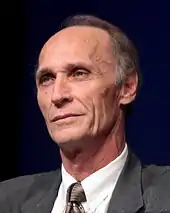
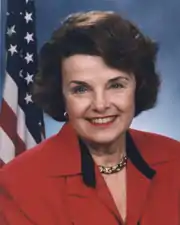

.jpg.webp)

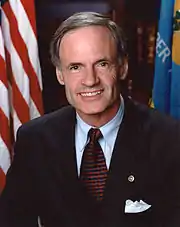
.jpg.webp)
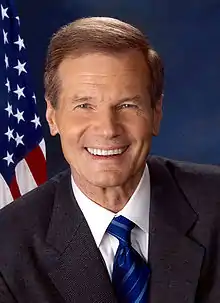
.jpg.webp)


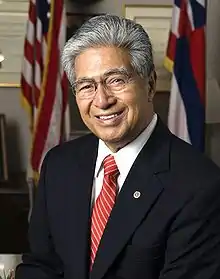
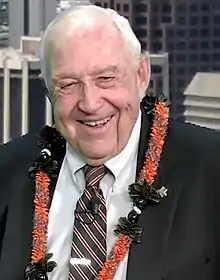
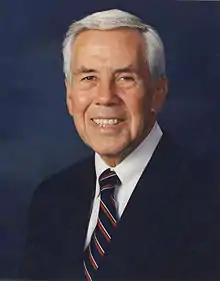

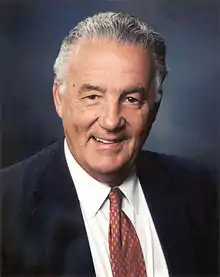


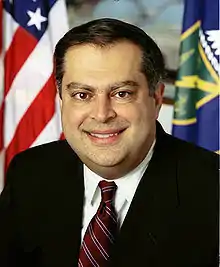

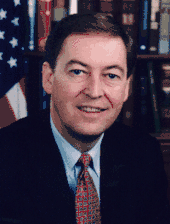
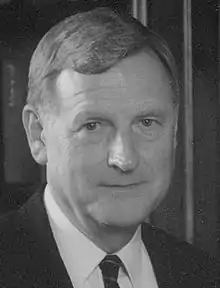
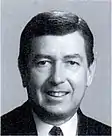


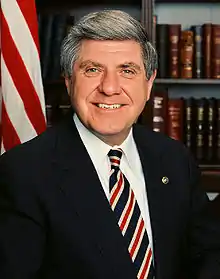

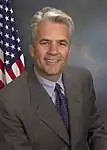
.jpg.webp)



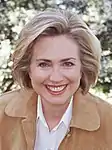
.jpg.webp)
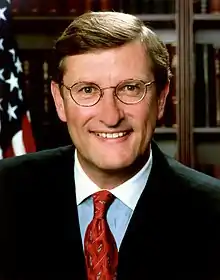



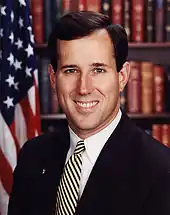

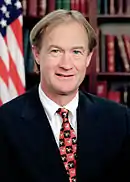

.jpg.webp)



.jpg.webp)


.jpg.webp)

.jpg.webp)
